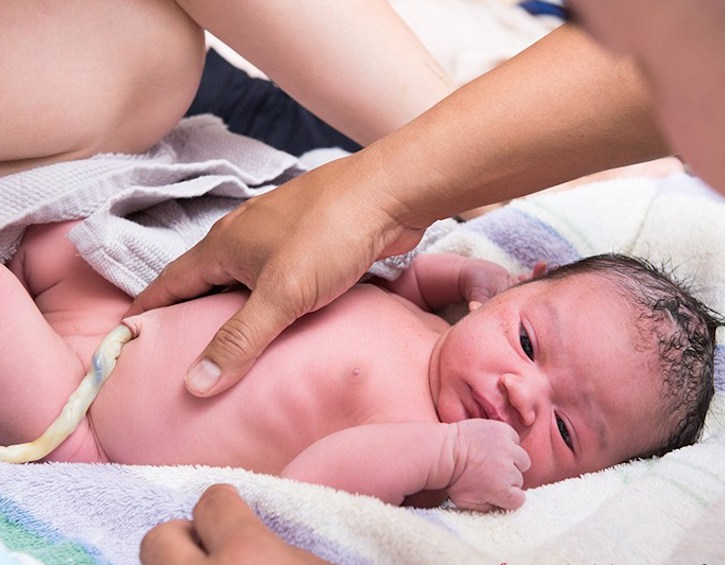
 Post Category - ExpertsExperts - Post Category - Fitness + HealthFitness + Health
Post Category - ExpertsExperts - Post Category - Fitness + HealthFitness + Health Post Category - BabyBaby
Post Category - BabyBabyDelayed Cord Clamping: what exactly is it and how can it benefit your baby?
Delayed cord clamping has been practised more regularly in recent years as a result of several international organisations (such as The World Health Organisation), recommending that it should be carried out routinely. However, many parents-to-be are still in the dark about what the process involves and how it can benefit their little one. With delayed cord clamping becoming more widely available in Singapore, we spoke to Dr Paul Tseng, Consultant Obstetrician and Gynaecologist at TLC Gynaecology Practice, Thomson Medical Centre, to bring you all the info.
What is delayed cord clamping?
Delayed cord clamping is the practice of postponing the clamping and cutting of the umbilical cord for between one to three minutes following birth, or until the cord stops pulsating. In the January 2017 issue of Obstetrics and Gynaecology, there is an updated guideline from American College of Obstetrics and Gynaecology pertaining to the benefits of delayed cord clamping, particularly to Preterm infants.
What are the benefits of delayed cord clamping?
In full-term babies studies have found that leaving the umbilical cord intact following delivery can allow for the transfer of 80ml to 100 ml of additional blood when compared with immediate cord clamping.
Benefits include an improvement in iron stores. Low iron has been linked to decreased cognitive, motor, and behavioural skills. For preterm infants, the delay improves circulation, boosts red blood cell volume, and reduces the need for blood transfusions. The delay also results in lower incidence of necrotising enterocolitis and intraventricular haemorrhage.

Can you request for this in your birthplan? What needs to be discussed before the birth in regards to this?
Definitely, it can be requested. Parents should be informed that for full term babies there may be a higher incidence (2%) of jaundice among babies who had received delayed cord clamping – however they can still have access to phototherapy to treat the jaundice. At higher risk for this would be big babies, in particular those born from diabetic mothers and those with a history of ABO incompatibility in the previous pregnancy.
Can one still do the initial new-born care while delayed cord clamping is taking place – like stimulating the baby along with maintaining skin-to-skin contact and mother-baby bonding time?
Yes, all these can still take place and should be initiated even with the cord is attached.
Are there any medical situations when delayed cord clamping would not be recommended?
In cases where there is fetal growth restriction from abnormal or reduced placental blood perfusion, it does not make sense to proceed with delayed cord clamping.

Are there any risks to mother or baby?
There is no evidence to show any increase in postpartum hemorrhage or increased blood loss at delivery.
If you want to save your baby’s cord blood for stem cell collection, can you still do delayed cord clamping?
Unfortunately, you cannot do both due to the large volume of blood that would be transferred straight to the baby instead of being available for collection. You have to decide one or the other. The decision is a personal choice which the parents have to decide on their own having weighed the benefits of each procedure.
So mama, if you want to include delayed cord clamping in your birth plan, check with your Obstetrician or Gynaecologist to see if they offer this service.
 View All
View All


 View All
View All


 View All
View All

 View All
View All
 View All
View All


 View All
View All






